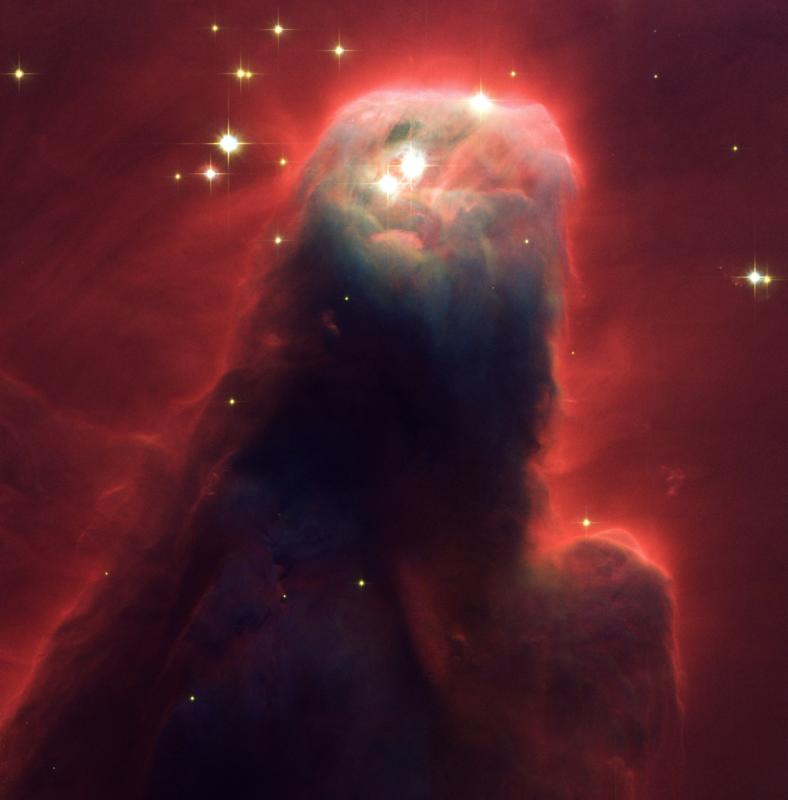What Killed Off The Dinosaurs?
By Evan FinnesThroughout the Earth’s history there have been several mass extinctions. Perhaps the most famous and controversial is the extinction event which killed off the dinosaurs and 70% of all other living creatures on the Earth. This mass extinction occurred about 65 million years ago, and marks the end of the cretaceous period, and is often referred to as the K-T extinction event.
It is referred to as the K-T extinction event because of a layer of sediment found around the world which marks the boundary between the cretaceous and tertiary periods. Below this layer, there are several non-avian dinosaur fossils, and above it there are no such fossils. Besides dinosaurs, several species of plants and invertebrates also disappear from this top layer of soil. The few lucky survivors of the extinction event include several mammalian and bird clades.
The leading hypothesis for this mass extinction event is called the Alvarez hypothesis, named after a team of father and son scientists, Luis and Walter Alvarez, who first suggested it in 1980. The Alvarez team found concentrations of iridium hundreds of times higher than normal in the rocks around the K-T boundary. Iridium is a high density element, which is rarely found in the Earth’s crust; because of its high-density and iron-loving characteristics, iridium is believed to be found at its highest concentrations in the Earth’s core. Because Iridium is an iron-loving element, the Alvarez team speculated that the high concentrations of iridium found around the K-T boundary, was due to a large asteroid impact.
Using the concentrations of iridium found around the K-T boundary, the Alvarez team was able to determine that these concentrations were normal in a type of asteroid known as chondrites. They were also able to calculate that the size of the asteroid would have been about 10 kilometers in diameter. The energy released during such an impact would be equivalent to 100 trillion tons of TNT—twice as powerful as the largest nuclear bomb ever tested.
An impact of this magnitude would likely have produced a dense cloud of dust, which would have engulfed the entire planet. This dust would have blocked off sunlight, which would cause a change in the climate, and temporarily prevented photosynthesis. The lack of photosynthesis could account for the extinction of several species of plant life. The loss of plant life, coupled with a cooling climate, would reverberate through the food chain, causing the extinction of many types of animals, including the dinosaurs.
The scar of such an impact is located in the Yucatan Peninsula, and is called the Chicxulub Crater. This crater was created by an asteroid impact approximately 10km in diameter, and isotope analysis dates this crater to the end of the cretaceous—about 65 million years ago. To some, this is enough to confirm Alvarez hypothesis; but Gerta Keller, a professor of geosciences at Princeton University, believes otherwise.
Professor Keller agrees that the extinction was due to a changing climate, but she disagrees with what may have caused such a change. Her research implies that the mass extinction occurred 300,000 years before the Chicxulub impact. Her team estimates the age of the impact based on spherules found in Texas and New Mexico. A layer of spherules was formed when rock was vaporized by the impact, shot into the stratosphere, and then rained down over North and Central America. This layer was used to determine that the impact happened precisely 300,000 years before the mass extinction occurred.
The layers of sediment above and below the spherules layer show exactly how life was affected by the impact. Keller’s studies show that not a single species found in the layer beneath the spherules layer disappeared from the layer above. She believes that the mass extinction that occurred 300,000 years after the Chicxulub impact was caused by a series of volcanic eruptions in the Deccan Traps.
These volcanic eruptions were periodic, and lasted from 10 to 100 years, producing a volume of lava, in cubic miles, greater than the Rockies and Sierras combined. From each eruption, toxic gas was spewed into the atmosphere and oozing lava spread 650 miles across India, forming the longest lava flows on Earth. The sulfur dioxide injected into the atmosphere would have turned to aerosols, causing global cooling, while acidizing the ocean through acid rain. The marine record shows that 50% of ocean life was killed off by the first eruptions, and the mass extinction was complete by the end of the eruption frenzy.
Everybody asks the question, “What killed the dinosaurs?” Perhaps the better question is, “why didn’t they return?” Keller states that the dinosaurs were steadily dying off before the chicxulub impact; her solution is that the volcanoes were slowly killing everything. Why then didn’t the dinosaurs, or something similar make a comeback after the volcanoes quit, and the Earth regained equilibrium? Did the volcanoes permanently alter the composition of the atmosphere? Did the Chicxulub impact hit the Earth hard enough to change its axial tilt? Was there a reduction in solar flux reaching the Earth due to an aging sun? One thing seems certain: after the demise of the Dinosaurs, there was not enough energy reaching the Earth to sustain such massive life forms. One might speculate that the conditions which led to the demise of these magnificent creatures, also created an environment suitable for the evolution of intelligent life, and eventually present day man.

